Omakase, a Japanese tasting menu, favors the adventurous. Here's what to expect
A piece of sushi once brought a woman to tears.
When she came in, “she wasn’t a huge sushi fan,” said Jay Powles, owner of the omakase pop-up Sushi by Sea.
But the courageous diner still secured one of the coveted counter seats for a meal full of raw fish and rice. When she suddenly started crying, Powles asked what was wrong.
“I’m so full of joy,” she said to Powles. “The food is so amazing. It took me back to my mother and grandmother’s cooking.”
Witness the power of omakase.
The Japanese word omakase directly translates to, “I’ll leave it up to you.” The phrase is simple, clean, and yet complex — a lot like sushi.
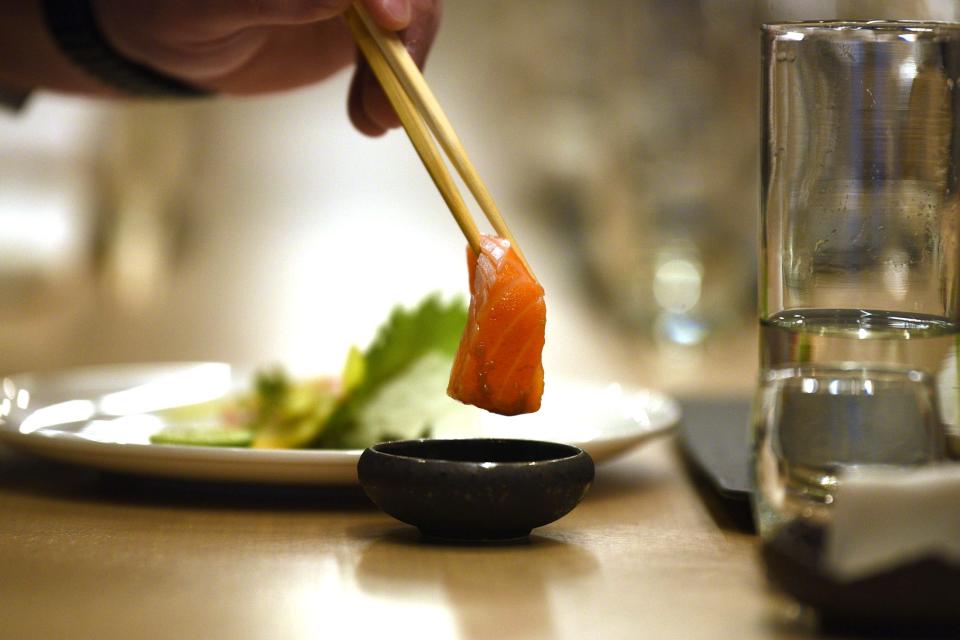
At its core, omakase is a multi-course dinner with no set menu, like a chef’s tasting. The chef presents small portions — often a single piece of sushi — and explains each as you go. Guests are seated at a counter with their fellow diners. The food is prepared before their eyes.
"Omakase almost ruins 'regular' sushi spots for me," said Alessia Aron, founder of Beyond the Plate Food Tours in Jersey City. "It transforms how you will eat sushi."
But not all omakases are built the same. Some can look like a warm conversation between chef and diner, like at Sushi by Sea, which formerly kept its location secret until you scored an invite and will open a brick-and-mortar soon. Others look like a stylish meal in a pleasantly minimalist setting, like at Sushi Kai in Fort Lee. Others still a raucous evening where shots of sake flow and black truffle is shaved with abandon, like at the traveling Pasta Ramen.
Scholar Trevor Corson says in his book “The Story of Sushi” (Harper Perennial, 2008) that omakase is “what the sophisticated customer says to the chef when settling down at the sushi bar. Sushi connoisseurs seldom order off the menu.” The Michelin Guide calls it “revered” and “intimidating.”
It’s a slower way to dine with very little room for adjustments to the meal. The chef will sometimes offer diners an alternative if they’re averse to a certain fish, but that messes with the cadence of the meal.
“If you know what you want to eat, don’t come here,” said David Bouhadana, owner of Sushi by Bou, which has locations in New York and Jersey City.
The cost of omakase
And the price point? It’s high. In New Jersey, omakase ranges from $50 (at Sushi by Bou) to $379 (at Pasta Ramen).
For some, an expensive meal where they have no control over what they’re eating is a nightmare. For others, it’s culinary nirvana. Omakase favors the bold.
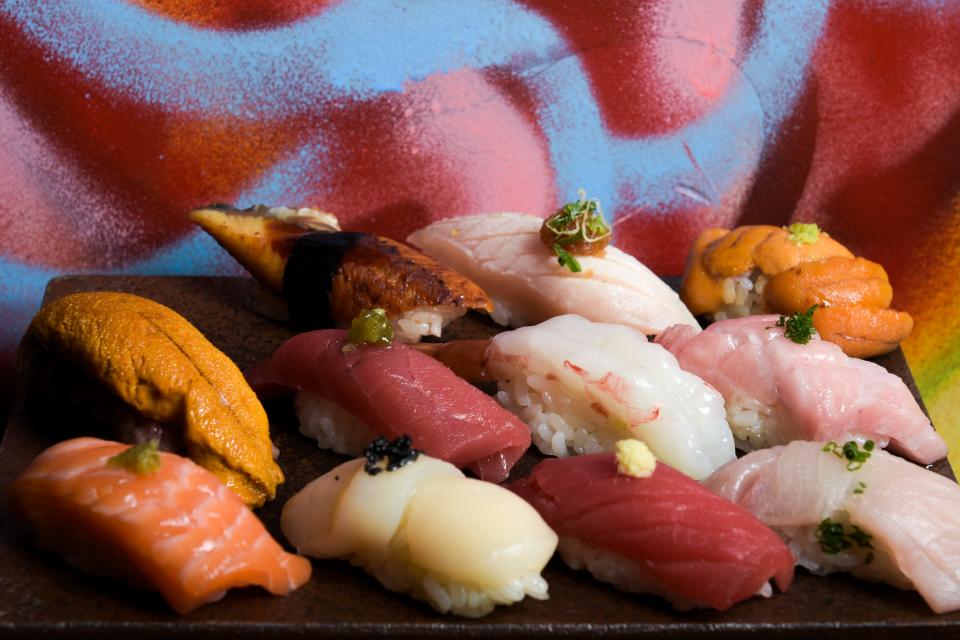
If bundles of packed rice, covered in king salmon with miso butter; salmon belly with flecks of charcoal salt and grated yuzu zest; a soft, steamy swirl of egg with shiitake mushrooms and black truffle; tuna gently charred by Binchotan charcoal; and velvety uni crowning a pile of carbonara sound like heaven, you’re in the latter group.
"I like that every bite is a surprise," said Danny Chin, who runs the popular food Instagram @EatWithDan. "You never know what you are going to get. I like to see the creativity of the sushi chef."
Chin credits omakase for introducing him to uni topped with Osetra caviar. "It was the most decadent bite I ever had."
Bouhadana calls omakase “poetry in motion” — a reflection of Japanese culture.
“In Japan, they’ve had 1,000 years of practice,” said Bouhadana. “They’re years ahead of us. Their food is extremely complex. Yet, sushi is also an efficient food. It’s a piece of fish on rice, but really you’re carefully deconstructing the anatomy of a fish and finding out how to make it the most delicious it can be.”
SUBSCRIBE: Help support quality photojournalism like this.
Within the past decade, omakase restaurants have crept into New Jersey. They’re rare; only a handful of places offer traditional counter-service omakase. New York City is — as usual — years ahead of Jersey when it comes to omakase.
Masa is a touchstone of the city’s omakase boom. Helmed by chef Masa Takayama, the restaurant opened in the Time Warner Center in Columbus Circle in 2004 to great acclaim. It garnered three Michelin stars and three out of four stars by The New York Times. Today, the price is $750 per person, not including tax or drinks — $950 if you want guaranteed seating at the sushi counter.
Most New York City omakases hover around the $200 range but often creep up. Dining at Shion 69 Leonard St., for example, a newly opened restaurant run by Chef Shion Uino, will set you back $420.
It's an evolving art, as well. Take Kono, an omakase that recently opened in Chinatown's Canal Arcade. Chef and owner Atsushi Kono uses an entire chicken — skin, organs, bones — instead of fish to create the courses.
A rich tradition
Chef Masashi Aoki of Sushi Aoki in Fort Lee is originally from Yokohama in Kanagawa Prefecture in Japan. The first time he had omakase was in Shibuya City in Tokyo.
“I was so nervous since I did not know how much I was going to pay because there was no price list,” he said. But the experience left an impression. Aoki started working in restaurants in Japan and then moved to New York City in 1987. He worked at Sushi Zen, Nobu and Sushi by Gari 46 in Manhattan before opening Sushi Aoiki with his wife, Yumiko.
“It has long been my dream to open a small, traditional sushi restaurant,” he said.
Few other omakase restaurants in New Jersey are run by Japanese chefs. But all bow to the Japanese chefs that taught them the trade.
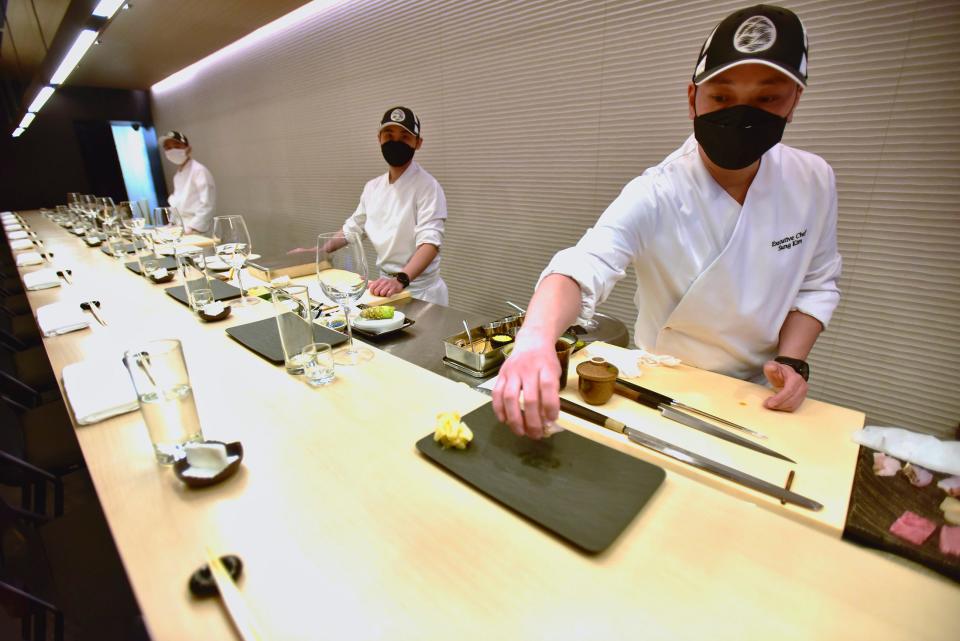
Sushi Kai’s head chef Sung Ju Kim, who is Korean, was taught by acclaimed Japanese chefs such as Masaharu Morimoto and Toshio Tomita. Kim puts the philosophy behind omakase succinctly: “The most important thing is the ingredients. You want to get the best ingredients and emphasize their flavor without tampering with it too much.”
At Sushi Kai, fish is delivered every Tuesday and Thursday and the restaurant is closed on Sunday and Monday. The chefs that work there are all full-time employees. They come in at 10 a.m. and prep until the first seating at 5 p.m. on Friday and Saturday and 5:30 p.m. on Tuesday, Wednesday and Thursday.
Some chefs are purists and only get their fish from Japan. Others ship in fish from around the world.
“Just because it’s from Japan, doesn’t mean it’s better,” said Shargordosky.
Sushi Kai gets its king spotted prawn from Canada. Pasta Ramen sources uni from Santa Barbara, California. Sushi by Bou ships in bluefin tuna from Spain.
Breaking the mold
Not every omakase is traditional in its approach. Take the raucous Wafu-Italian, invite-only omakase Pasta Ramen, for example.
“If super traditional, old-school Japanese chefs saw what we’re doing and how much food we give, they would be like, ‘What the hell is this,’” said chef-owner Robbie Felice.
Pasta Ramen is an omakase in that you won’t get a set menu and you’ll be served plenty (13 courses to be exact) of Japanese-inspired dishes. But that includes cacio e pepe dumplings and bundles of pasta sprinkled with black truffle. The composed dishes at Pasta Ramen are a far cry from the single pieces of sushi served at most omakase counters.
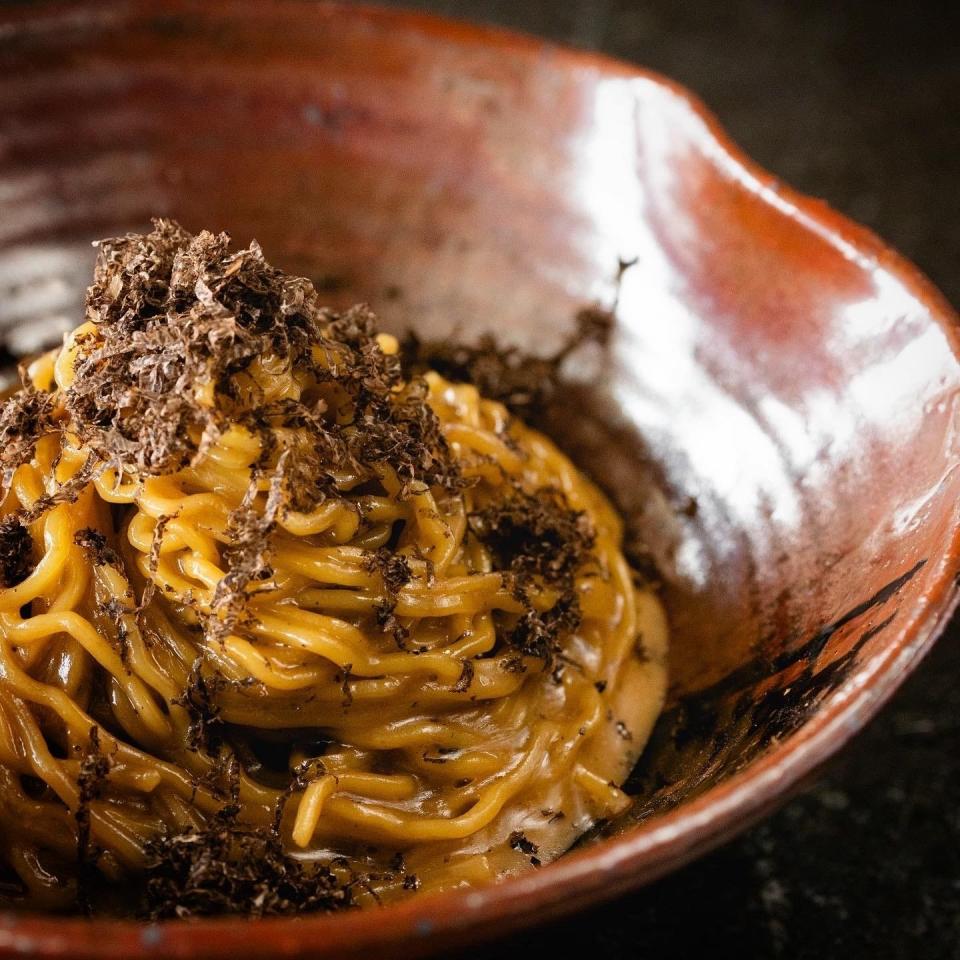
“Just because you’re doing something different, doesn’t mean it’s wrong,” Felice said. “I’m taking something very proper and simple and beautiful and tearing it up to do something different.”
And any omakase chef will tell you the experience is half the magic. Conversations with the chef about where the fish comes from, how it’s prepared and what inspired the dish are almost always encouraged.
“A half-hour in with some sake, and we’re best friends,” said Bouhadana. His Sushi by Bou is more stripped down than other omakases. He emphasizes a more approachable price point at $50 over an elegant dining room.
Powles of Sushi by Sea won’t reveal the chef he works with… unless you come in for a seating. Then, you’re in the inner circle. “We want to tell you our secrets,” he said.
Subscriber exclusive: Craving international snacks? Find them at these gems
'It's tequila time': Why this spirit is poised to overtake vodka as America's favorite
Restaurant guide: Weed is now legal in NJ. Here's our ultimate munchies guide
Eat the unexpected
Expect to expand your palate, as well. At an omakase, you’ll likely try things you’ve never tasted before and even things you don’t like, as the chefs work to turn your opinion around.
"I love Omakase because I like the surprise of not knowing what will be the next bite," said Chin. "Omakase is typically the freshest fish the chef has on hand and also really shows off the creativity of the chef in mixing various seafood, textures, temperatures and sauces."
Shargordosky of Sushi Kai said many guests come in with a distaste for mackerel. But Chef Sung counteracts the fish’s strong, “funky” flavors by house curing and smoking it.
“When people try it they realize how good it is — how many layers there are to it,” he said.
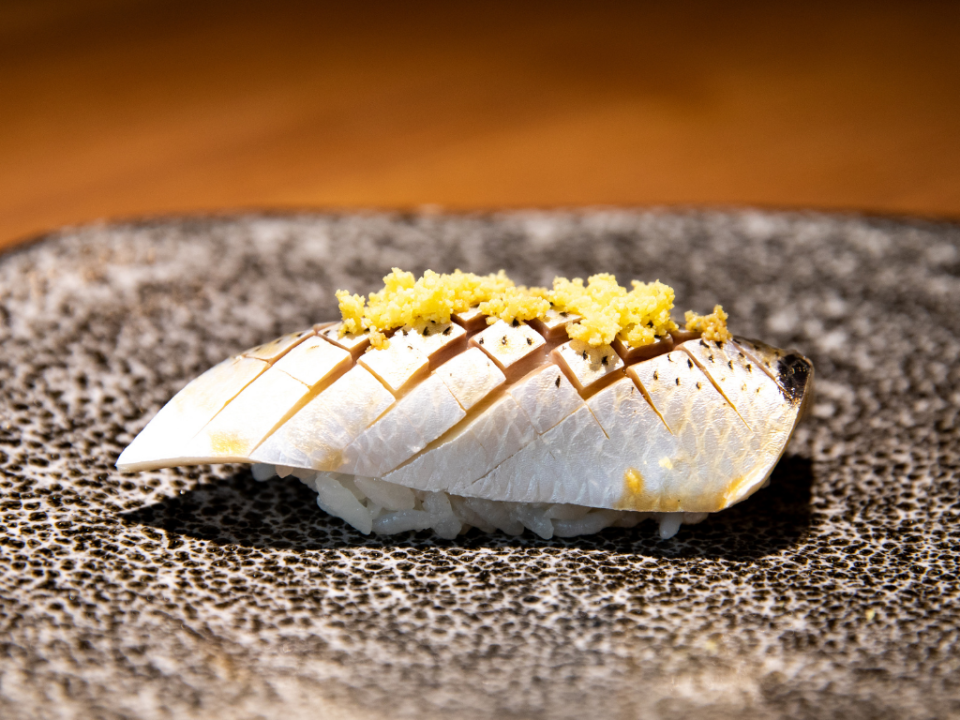
Bouhadana always encourages his customers to try fish eggs, a food that’s common in Japan but unfamiliar to many American diners.
"There's no thinking," said Aron of Beyond the Plate. "It feels like every course is a surprise. You get to try different fish, maybe some you’d never think to try."
For Aron, that fish was Monkfish liver.
As for Felice, “I love getting people hooked on uni,” he said. Uni, or sea urchin, is a polarizing delicacy.
“Many people use too much,” said Felice. “It’s overkill.”
At one seating, a Pasta Ramen customer noted in his reservation that he despised uni. He refused, said Felice, to eat it. At least, until a plate of divine uni carbonara was placed in front of him. Then it was game over.
Recalled Felice, “I had him slurping uni off his hand by the end of the night.”
Visit for yourself
Sushi by Sea Secret, traveling location. Register at sushibysea.com.
Sushi Kai 206 Main St., Fort Lee; 201-429-2820, sushikainj.com.
Pasta Ramen Secret, traveling location. Register at pastaramen.com.
Sushi by Bou Inside Ani Ramen. 218A Newark Ave., Jersey City; 201-614-3660, sushibybou.com.
Masa 10 Columbus Circle, New York; 212-823-9800, masanyc.com.
Sushi Aoki 215 Main St., STE 104, Fort Lee; 201-663-5756, sushiaokiusa.com.
Other places to try omakase in North Jersey
Domodomo 200 Greene St., Jersey City; 201-267-0222, domodomojc.com.
Vanity at Monroe's 36-42 Newark St., Hoboken; 201-238-2594, monroesnj.com.
Shumi Japanese Cuisine 70 E. Ridgewood Ave., Ridgewood; 201-345-0808, shumiomakase.com.
This article originally appeared on NorthJersey.com: Where to get omakase sushi in NJ, NY and what to expect

